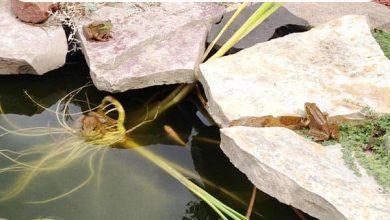Humid Tropical Climate: [Characteristics, Flora, Fauna and Adaptability]

Important points about the Humid Tropical Climate:
- What is? The humid tropical climate has a particular characteristic: heavy rainfall abounds. High and regular temperatures also predominate most of the year, with oscillations at the thermal level.
- Where is it located geographically? This climate is located between the north and south of the so-called equatorial or middle zone of the Earth, even reaching its influence to the tropics.
- How is the flora? It is a climate with a very typical vegetation: savannah, made up of isolated trees and bushes or tall grasses that appear quickly when the wet season with heavy rainfall is over.
- How is the wildlife? Some of the species that develop in the humid tropical climate are the lion, the leopard, the lynx and the jaguar. Iguanas, lizards and birds, such as macaws, toucans, parrots, parakeets, hummingbirds, among many others, also predominate.
- How long is the day and night? In the humid tropical climate there is notypical summer or winter. In general terms, day and night are similar throughout the year, lasting approximately 12 hours.
- Can human beings live in this climate? They are considered the great lungs of the planet and have been explored by man since time immemorial, when indigenous communities lived in these jungles full of natural resources that they took advantage of to survive and transcend.
What is humid tropical climate?
 When speaking of humid tropical climate, reference is made to a type of warm climate with a special characteristic: heavy precipitation abounds.
When speaking of humid tropical climate, reference is made to a type of warm climate with a special characteristic: heavy precipitation abounds.
In this climate there is also a predominance of high and regular temperatures most of the year, with oscillations at the thermal level.
The so-called precipitation area of this climate has important fluctuations that go between 4,000 to more than 6,000 thousand millimeters of annual precipitation, on average.
It is produced mainly in low-lying areas of the North and Caribbean, as well as the central and southern Pacific and regions of Central America such as Costa Rica, as well as South America with its spectacular Amazon jungle.
Where is the humid tropical climate located geographically?
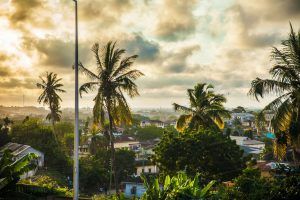 This climate is located between the north and south of the so-called equatorial or middle zone of the Earth, even reaching its influence to the tropics.
This climate is located between the north and south of the so-called equatorial or middle zone of the Earth, even reaching its influence to the tropics.
It is typical of the climate of large regions such as all of South Asia, towards India and the so-called Indochina peninsula.
But it also prevails in the northern region of the Australian continent, the central region of Africa and much of South America, especially in Venezuela, Brazil, Colombia, Peru, Paraguay and Argentina, as well as the Caribbean island of Cuba.
In the case of the Asian region, there is a derived climate subtype called monsoon climate, whose main characteristic is to develop a short season of great rains, popularly known as monsoon, which can wreak havoc on the population.
What characteristics does the humid tropical climate have?
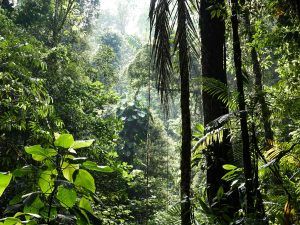 The humid tropical climate is a type of hot climate with high rainfall and high temperatures.
The humid tropical climate is a type of hot climate with high rainfall and high temperatures.
The humidity and heat are felt practically throughout the year, as a result of the heating of the earth and the stormy activity of the clouds.
That is why there is great pluviometric activity, great rains in the tropical forests, which can receive an average of 2,600 millimeters per year.
The humidity can be maintained daily at 88%. It has a wet season and a dry season. The temperature averages a monthly mark of 25ºC and a variation that does not exceed 20ºC.
It is located at both ends of the so-called equatorial line, with a precision of three degrees north and south, even though it can also reach the tropics of Cancer and Capricorn on the planet.
Torrential rains are produced as a result of the heating of the air, which rises towards the terrestrial equator, thus forming great tropical forests.
Thanks to the monsoon, in Southeast Asia, understood as a meteorological phenomenon characterized by torrential rains that invade everything, monsoon forests are generated, an intermediate variant between tropical and temperate forests.
What flora predominates in the humid tropical climate?
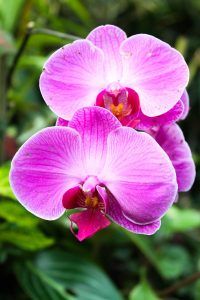 It is a climate with very typical vegetation: savannah, made up of isolated trees and mountains or tall grasses that appear quickly when the wet season is over, with heavy rainfall.
It is a climate with very typical vegetation: savannah, made up of isolated trees and mountains or tall grasses that appear quickly when the wet season is over, with heavy rainfall.
There is no cold season, typical of strong winters, because there are few variations in temperature throughout the year.
Its forests are also of the humid tropical type, because they are marked by the prevailing climate. Or are there landscapes?
In the same way, there are very leafy trees, organized in perfect galleries on the banks of watercourses, with large rivers of reddish soil and intricate jungles.
Plant species have a great variety, very abundant and even endemic in many places.
The vegetation can even grow in two very well differentiated layers, with a canopy or upper layer where gigantic trees can be seen, very tall, up to 60 meters high. But a lower level of smaller trees, shrubs, and vines is also visible.
Palm trees, ferns and orchids of great splendor grow, with endemic species.
What fauna predominates in the humid tropical climate?
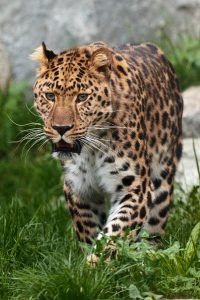 The fauna of this climate is very, very diverse and endemic, typical of tropical forests, many of them still unexplored.
The fauna of this climate is very, very diverse and endemic, typical of tropical forests, many of them still unexplored.
There are still insects, plants and animals of the tropical forests that have not been able to be classified, identified by the scientific community.
But many of these miles and miles of vegetation are known to be at least 100 years old on Earth.
In the tropical jungles all kinds of insects and arachnids are found. They can be seen from ants, bachacos and mosquitoes or mosquitoes, butterflies, wasps, bees, caterpillars, hairy black spiders or cute spiders, snakes, scorpions.
Among many other species that coexist with highly skilled mammals such as lions, leopards, lynxes, jaguars. Iguanas, lizards and wonderful multi-colored birds such as macaws, toucans, parrots, parakeets, hummingbirds, among many others that fly through the skies, also predominate.
How long is the day and night in the humid tropical climate?
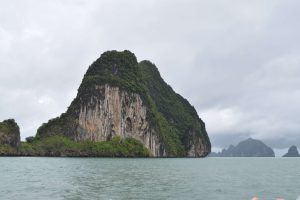 In the humid tropical climate, as has already been said, an average annual temperature of 25ºC predominates, where frosts have no place
In the humid tropical climate, as has already been said, an average annual temperature of 25ºC predominates, where frosts have no place
From there it follows that a typical summer or winter is not recorded either, they do not exist in the areas of the planet with less thermal oscillation.
In other words, as there are no large annual thermal oscillations, and it is even much smaller as we approach the so-called equatorial regions, it is common to hear that the night is considered as winter in the tropics.
But in general terms, day and night are similar throughout the year, with about 12 hours for each of duration.
Can humans live in the humid tropical climate?
 Biodiversity on the planet, with true endemic sanctuaries of unrepeatable plants and animals, would not be possible without the forests derived from the humid tropical climate.
Biodiversity on the planet, with true endemic sanctuaries of unrepeatable plants and animals, would not be possible without the forests derived from the humid tropical climate.
The largest sinks on the planet that provide oxygen and retain carbon dioxide.
They are considered the great lungs of the planet and have been explored by man since time immemorial when autochthonous communities, the indigenous people, lived in these jungles full of natural resources that they took advantage of to survive and transcend.
These forests, full of large fruit trees, allowed the development of subsistence agriculture, as well as the mass production of exotic tropical fruits such as pineapples and mangoes, passion fruit or passion fruit.
As well as entire plantations of bananas, bananas or bananas and the emblem of all native indigenous crops: corn, the main food source since ancient times.
The Amazon region, with extensive rivers such as the Amazon and the Orinoco that cross Brazil and Venezuela, is in danger due to the criminal hand of man. The Amazon jungle has given birth to formidable landscapes and forests of a biodiversity that has not yet been quantified by name and surname by science.
The Gran Sabana with its spectacular tepuyes that make up the savannah landscape of the Venezuelan Amazon, along with the Canaima National Park, for example, are under constant siege from smugglers of gold and precious metals such as coltan.
Totally uncontrolled greed that has devastated thousands of hectares due to practices as destructive as the use of mercury, which contaminates soils and bodies of water.
In the case of Brazil, the deforestation, felling and burning of thousands of hectares for agricultural and livestock purposes have also seriously endangered the biodiversity of the Amazon Rainforest, declared a World Heritage Site by UNESCO.
Bibliographic references
- Some observations on the dynamics of flowering in the humid tropical forest of Villa Colón, LA Fournier, S Salas – Revista de Biologia Tropical, 1966 – revista.ucr.ac.cr
- Silvopastoral systems in the humid tropical region of Mexico: The case of Tabasco, MN Maldonado, DJ Grande, EE Fuentes… – … Tropical, 2008 – ve.scielo.org
- Passive cooling systems for buildings in a humid tropical climate, ME Hobaica, R Belarbi, L Rosales – Possibilities of application in …, 2001 – core.ac.uk
- Evaluation of the reproductive capacity of bovine stallions kept in a humid tropical climate, RF Lezama, JJ Hernández… – Revista…, 1984 –cienciapecuarias.inifap.gob.mx
- Climate as a resource to save energy in low-income housing in a humid tropical climate, FE LIZCANO LOPEZ – 2001 – risisbi.uqroo.mx
You may also be interested in:
- Koppen climate classification: [Concept, Characteristics and Types of Climates]
- Alpine Climate: [Characteristics, Flora, Fauna and Adaptability]
- Arid Climate: [Characteristics, Flora, Fauna and Adaptability]
- Temperate Continental Climate: [Characteristics, Flora, Fauna and Adaptability]
- Continental Climate: [Characteristics, Flora, Fauna and Adaptability]
- High Mountain Climate: [Characteristics, Flora, Fauna and Adaptability]
- Climate of Argentina: [Characteristics, Flora, Fauna and Adaptability]
- Australia Climate: [Characteristics, Flora, Fauna and Adaptability]
- California Climate: [Characteristics, Flora, Fauna and Adaptability]
- Climate of Europe: [Characteristics, Flora, Fauna and Adaptability]
- Tundra Climate: [Characteristics, Flora, Fauna and Adaptability]
- Equatorial Climate: [Characteristics, Flora, Fauna and Adaptability]
- Cold Climate: [Characteristics, Flora, Fauna and Adaptability]
- Cold Weather: [Characteristics, Flora, Fauna and Adaptability]
- Mediterranean Climate: [Characteristics, Flora, Fauna and Adaptability]
- Ocean Climate: [Characteristics, Flora, Fauna and Adaptability]
- Polar Climate: [Characteristics, Flora, Fauna and Adaptability]
- Subpolar Climate: [Characteristics, Flora, Fauna and Adaptability]
- Subtropical Climate: [Characteristics, Flora, Fauna and Adaptability]
- Subhumid Temperate Climate: [Characteristics, Flora, Fauna and Adaptability]
- Temperate Climate: [Characteristics, Flora, Fauna and Adaptability]
- Dry Tropical Climate: [Characteristics, Flora, Fauna and Adaptability]


![Photo of Watermelon Pests and Diseases: [Detection, Causes and Solutions]](https://www.complete-gardening.com/wp-content/uploads/2022/08/watermelon-pests-and-diseases-detection-causes-and-solutions-390x220.jpg)
![Photo of Weeds: [Characteristics, Types, Elimination and Damage]](https://www.complete-gardening.com/wp-content/uploads/2022/08/weeds-characteristics-types-elimination-and-damage-390x220.jpg)
